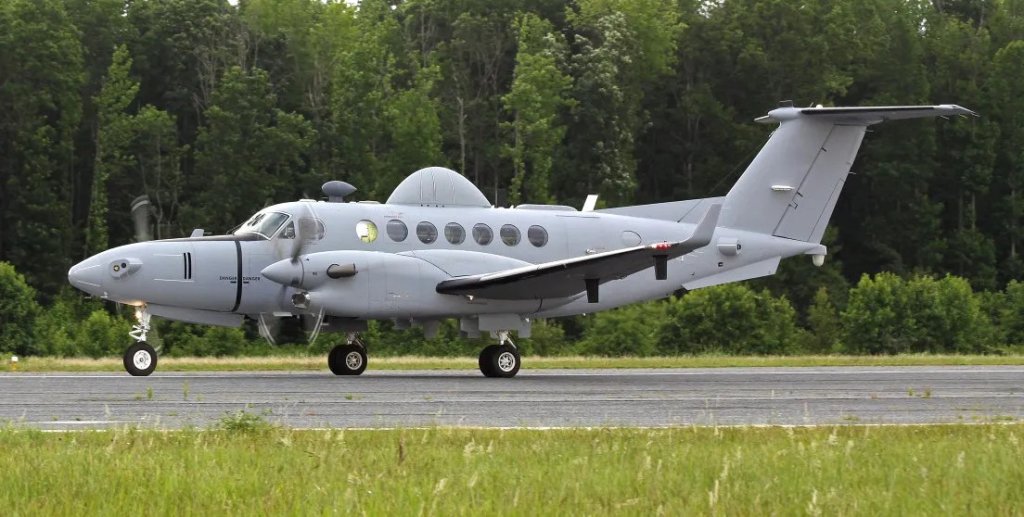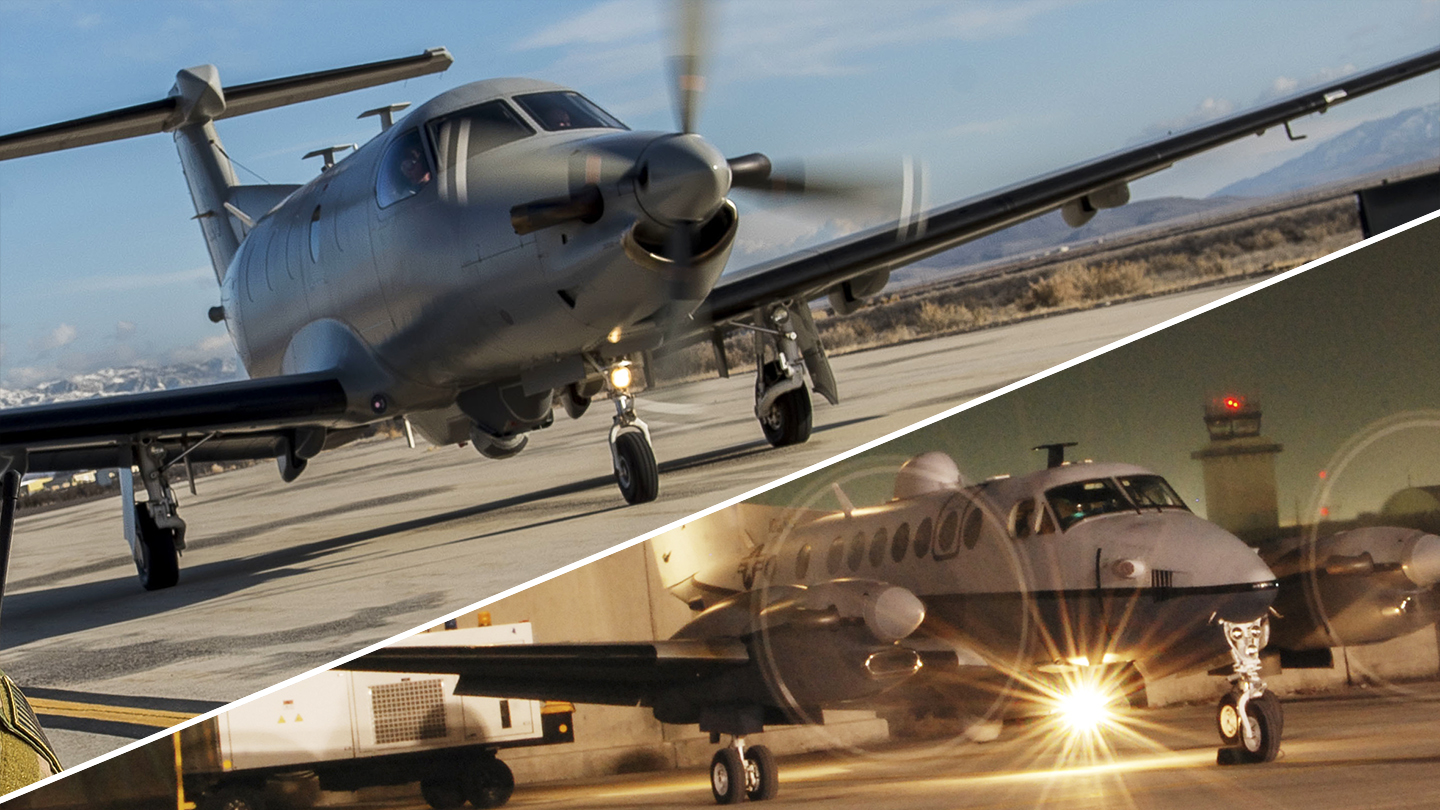How U.S. Special Operations Command (SOCOM) expects to fill the capability and capacity gaps that will be created by the planned retirement of U-28A Draco and Beechcraft King Air-based surveillance aircraft is coming under increasing scrutiny. SOCOM and U.S. Air Force officials have repeatedly stressed that while ditching the U-28As and King Airs will free up resources to help field its new OA-1K Sky Warden light attack aircraft, the latter is not a replacement for the former.
The Government Accountability Office (GAO), a Congressional watchdog, confirmed to The War Zone earlier this week that it is currently conducting a classified review of SOCOM’s decision to divest the U-28As and King Air-based intelligence, surveillance, and reconnaissance (ISR) aircraft, the latter of which are often referred to collectively as MC-12s. This is separate from GAO’s already extensive and still ongoing assessments of the Armed Overwatch program that led to the OA-1K, a single turboprop-engined light attack aircraft based on the Air Tractor AT-802 crop duster.

“SOCOM told us that their decisions about Armed Overwatch occurred separate from their decisions to divest of existing aircraft,” a GAO spokesperson told The War Zone. “We are separately conducting a classified assessment of SOCOM’s process for how it decided to divest of ISR aircraft.”
“SOCOM plans to divest two ISR platforms. Subsequently, some personnel and resources from the platforms will be used to support Armed Overwatch,” GAO said in an unclassified summary of its assessments to date of the Armed Overwatch program that was released earlier this month. “However, GAO found that SOCOM has not taken steps to plan for, or add, critical ISR capabilities provided by soon-to-be divested aircraft. Also, SOCOM has not addressed risks associated with the loss of these capabilities if the new aircraft does not provide them.”


The exact sizes of the current U-28A and King Air ISR fleets are not entirely clear. In a report published in December 2023, GAO said that close to 40 U-28As and around 15 ISR-configured King Airs remained in service. The Draco is a militarized version of the Pilatus PC-12M single-engine turboprop, while the members of the Beechcraft King Air family are twin-engine turboprop types. U-28As and MC-12s carry different, but similar mixes of sensors, including electro-optical and infrared video cameras and signals intelligence (SIGINT) suites.

There is also uncertainty now around the expected size of the OA-1K fleet. In its Fiscal Year 2025 budget proposal released earlier this year, SOCOM revealed plans to shrink the total Sky Warden purchases down to 62 from 75.
“Our requirement still remains 75 [OA-1Ks] based on what we’ve determined,” Air Force Lt. Gen. Michael Conley, head of Air Force Special Operations Command (AFSOC), told The War Zone and others at a media roundtable on the sidelines of the Air & Space Forces Association’s main annual conference last week. “I think it still provides a cost-effective close air support platform, which is one of the missions that it was designed for. It’s still going to provide an ISR capability.”
The OA-1K can carry camera turrets and other sensors in pods under its wings, but these will only provide limited capabilities compared to the integrated ISR suites found on the U-28A and King Air variants. As already noted, SOCOM and the Air Force have now made clear that they do not see the Sky Warden as a replacement capability-wise for any existing crewed fixed-wing surveillance and reconnaissance aircraft. At the annual SOF Week conference in May, SOCOM officials said that they working on new aerial ISR requirements that could lead to more direct successor to the U-28A and King Airs.

A core underlying issue in all of this is the broader shift in focus across the U.S. military to preparing for future high-end fights, especially a potential one against China in the Pacific, after decades of counter-terrorism and other lower-intensity missions. The U.S. special operations community, which had been at the forefront of operations during the Global War on Terror era, is at a particular watershed moment now. This has had a direct impact on planning around the OA-1K and SOCOM’s crewed fixed-wing ISR fleets, as well as other special operations unique aircraft like the AC-130J Ghostrider gunship.
“From when OA-1K was conceptualized and decided on until now, the world’s changed a little bit,” Lt. Gen. Conley said last week. “But as we move forward, I think there’s opportunity to look at, again, some novel mission sets. …how quick can we get the wings on and off it so we could use it in some sort of crisis response, if we needed to? Where does the role of SIGINT [signals intelligence], or ELINT [electronic intelligence] or… some sort of ISR collect [factor in] there. I think there’s opportunity for that. Again, not anything we’ve committed to yet.”
When it comes to discussions about crewed fixed-wing ISR capabilities, especially in a world full of ever-more capable and steadily proliferating air defense threats, this broader debate extends beyond just the U.S. special operations community. The U.S. Army has also been divesting significant numbers of turboprop surveillance and reconnaissance aircraft, fleets that had ballooned in size in the past 15 years to support operations in places like Iraq and Afghanistan. That service is now looking at a new mix of aerial ISR capabilities that includes modified business jets and high-altitude balloons.

AFSOC’s Conley also stressed at the AFA conference this year that while the primary focus of America’s armed forces now is being ready to execute major combat operations against a near-peer opponent, this doesn’t mean that lower-end missions will evaporate. A central argument behind the Armed Overwatch program has always been the value of having cheaper alternatives to tactical combat jets, bombers, and other aircraft for conducting light attack and ISR missions in permissive environments.
A concept of operations like this also frees up other aircraft for higher-priority missions, or just allows them to not have to fly as much, helping to reduce maintenance and logistics costs. Aircraft like the Sky Warden have the additional benefit of being able to operate with minimal footprints at far-flung locations closer to their mission areas without the need for already heavily in-demand tanker support. That proximity also helps when it comes to time on station, which has its own cost implications. The price to operate fast jets and other aircraft for bases further afield to conduct short-endurance sorties can quickly add up.

“I tell my team every day [that] the Pacific is incredibly important to us for all the reasons – you know, Secretary [of the Air Force Frank Kendall has put emphasis on] China, China, China – we get it,” the head of AFSOC explained. “But we’ve also got a rest of world mission that I’m responsible for, as well.”
“We still have a global mission. … I don’t think we’re done in CENTCOM,” he continued, referring to U.S. Central Command, which oversees U.S. military operations across the Middle East, which is currently in the throes of a number of major crises in which the U.S. military is embroiled to differing degrees. “And I think there’s probably some disconnects in how we analyze what the future fight will look like.”
Lt. Gen. Conley also noted that his command is “still digesting” the latest of GAO’s assessments on OA-1K and that there is “some reconciliation we still need to do” with regard to the Congressional watchdog’s work to date.
AFSOC, as well as SOCOM, will now also have to do the same with regard to whatever comes out of GAO’s separate review of the plans to shed the U-28As and King Airs, which may have new impacts on U.S. special operations aviation plans going forward.
Contact the author: joe@twz.com
